
 |
|
|
Soybeans
Volume 59 Number 13 Date 07/31/2014 PHYTOPHTHORA ROOT ROT - A survey of soybeans in 35 Wisconsin counties from June 6-July 16 found the highest incidence of root rot caused by Phytophthora sojae since testing began in 2008. Plants from 49% of fields sampled (26 of 53) tested positive for this disease. Counties in which P. sojae was identified were Barron, Clark, Dane, Green, Jefferson, Kenosha, Lafayette, Manitowoc, Marathon, Ozaukee, Rock, Sheboygan, St. Croix, Walworth and Winnebago, though no county should expect to be free from the disease after the unusually cool and wet start to the 2014 growing season. In addition to P. sojae, a relatively new Phytophthora species, P. sansomeana, was also detected in soybean roots from Calumet, Dunn and Eau Claire counties. This pathogen was first identified on soybean in Wisconsin in 2012 in Jefferson, Marathon and Sheboygan counties, and again in 2013 in Dane, Green, Outagamie and Sheboygan counties. Research into its impact on soybean and corn is ongoing. -- Anette Phibbs, DATCP Plant Pathologist SOYBEAN APHID - Colonies on reproductive soybeans are still unusually low for late July. The average count in 125 fields sampled as part of the annual survey now in progress was less than five aphids per plant. The highest count documented as of July 30 was only 19 aphids per plant in the Viroqua area of Vernon County. As previously mentioned, localized hot spots of several hundred aphids per plant are not unusual within some fields, but field-wide averages are still extremely low, emphasizing the need for thorough scouting before control decisions are made. Treatment is neither economical nor advisable until the threshold of 250 aphids per plant on 80% of the plants has been exceeded. Once again, aphid counts have not surpassed this level in any soybean field surveyed by DATCP this season. JAPANESE BEETLE - This pest continues to cause light to moderate (5-15%) defoliation of soybeans, particularly along field margins. Infestations were noted in Columbia, Dodge, Monroe, Rock and Vernon counties this week. The economic threshold for Japanese beetle and other leaf feeding soybean pests is 20% defoliation between bloom and pod fill. Spot treatment is an acceptable form of control for fields with the heaviest injury occurring in the peripheral areas. -- Krista Hamilton, DATCP Entomologist 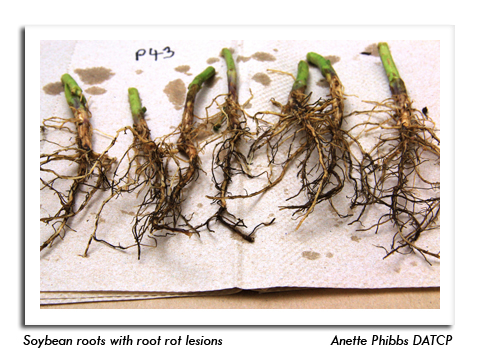
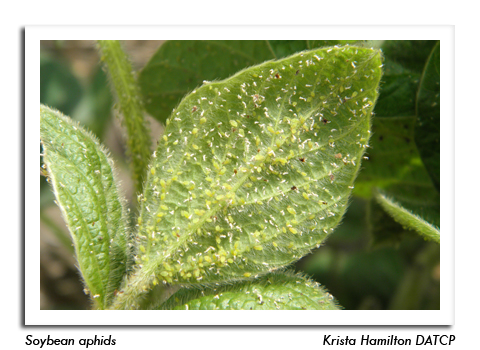
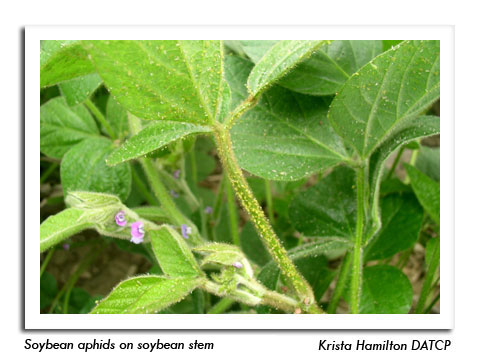
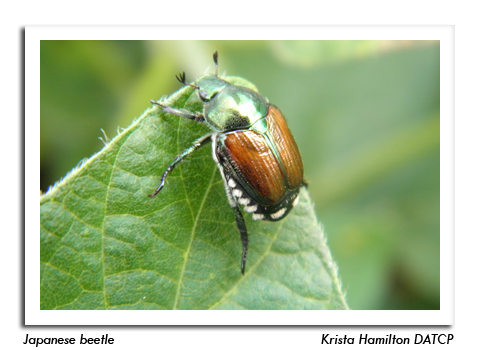
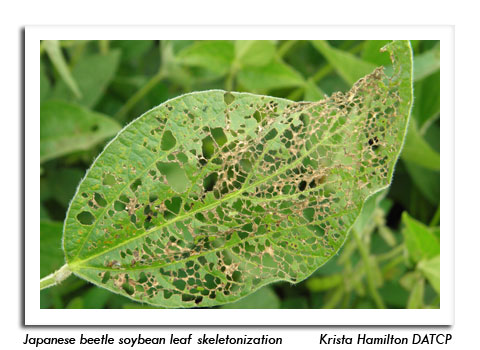
|
|
|